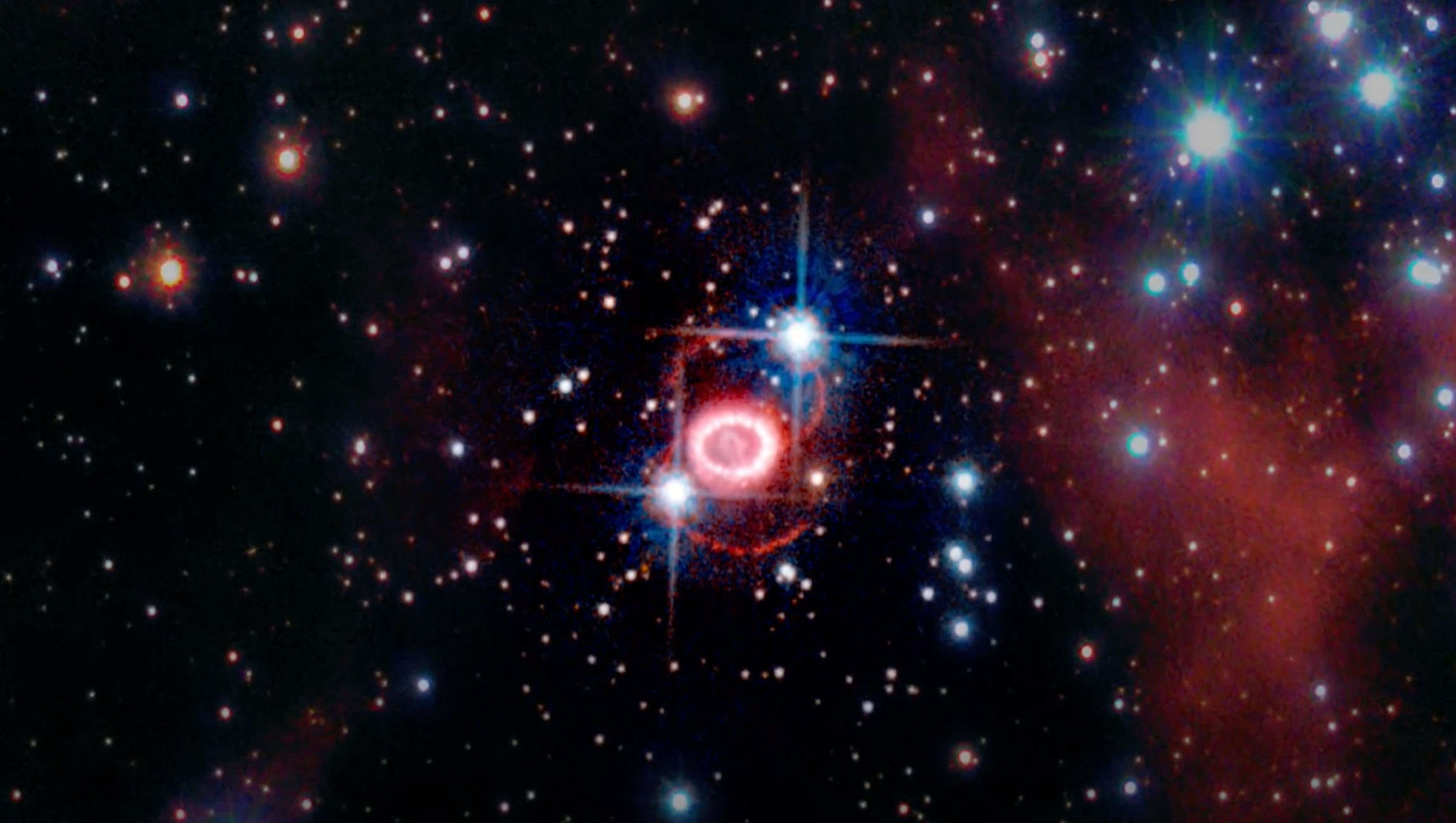Create a free profile to get unlimited access to exclusive videos, sweepstakes, and more!
There might be a star out there barely old enough to remember the ‘80s—among stars that are billions of years old

Millions of years is young for a star. When orbs of fire have been around for billions and billions of years, some still blazing from the time Earth was born out of a fiery chasm, several million years is nothing.
Which makes it all the wilder that there is a neutron star out there that is 33 years old. Not 3 billion or 33 million. Thirty-three, as in coming into existence the same year Spaceballs was released. Back in 1987, a supernova that became know as SN 1987A blew up in the Large Magellanic Cloud 170,000 light-years away. Astronomers observing SN 1987A suspected the star corpse had left something in its wake. They assumed a neutron star had emerged, but have not been sure whether that star survived. Now there is new evidence it is still blazing out there.
“This discovery builds upon years of ALMA observations, showing the core of the supernova in more and more detail thanks to the continuing improvements to the telescope and data processing,” said astronomer Remy Indebetouw, who was not involved in the study which uncovered that evidence but has been on the ALMA imaging team.
Human lives are hardly a blink of a star’s proverbial eye. The next youngest star known to exist is Cassiopeia A, and nobody alive now can remember when it ignited 330 years ago. Hi-res images from ALMA (Atacama Large Millimeter/submillimeter array) were what exposed something shining with extreme brightness SN 1987A. It looked like an amorphous blob of plasma brighter than anything around it. While that in itself is a gargantuan cloud of gas and dust, not a neutron star, something was heating up the star stuff in the cloud to make it so blinding.
The astronomers investigating SN 1987A believe that was where the supposed star had to be if it really did crawl out of the supernova.
“The dust and gas could be at higher temperatures than the surrounding material, though higher density cannot be totally excluded,” they said in a study recently published in The Astrophysical Journal. “One of the possibilities is that a compact source provides additional heat at that location.”
That compact source is probably a neutron star — though not a pulsar or black hole. Neutron stars form after the protons and electrons in a supernova core merge into neutrons. These extremely dense objects often turn into pulsars, whose pulses of radiation occur regularly. Their magnetic fields spew particles out from either end. Pulsars are only as strong as their spin speed and magnetic fields, and what the two teams of astronomers saw simply did not match what observations of a pulsar should have looked like. The hypothetical star in SN 1987A was also emitting heat energy consistent with what should be expected to come form the surface of a young neutron star.
Supernova cores that exceed 3 solar masses can become dense enough to morph into black holes, but assuming the object is a black hole would make it difficult to explain its luminosity. Black holes are surroujnded by glowing accretion shields and photon rings, but even that light doesn't come anywhere near a neutron star's blaze.
The only way to find out whether the thing lurking in SN 1987A is a neutron star for sure is to wait several more decades until enough dust and gas clears to expose it. Millennials might be the new boomers by then.


























